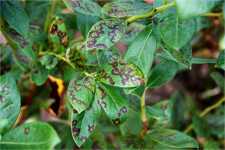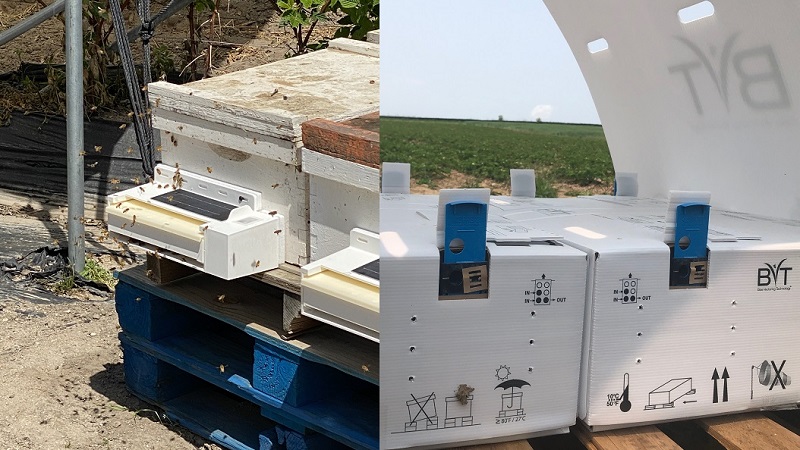Tips to Protect Blueberries from Pathogens

Specific disease problems occur at different times of year, and through the various stages of berry production. Luckily for us, disease only occurs when the environment is favorable, the plant is susceptible, and the pathogen is present. How favorable, how susceptible, and how much pathogen, all determine how severe a disease outbreak will be. Even in Florida, disease doesn’t occur all the time. As an Extension specialist, I see many disease outbreaks each year across the state. In each case, I tend to ask the grower questions that help me understand something about these three factors (host, environment, and pathogen) and I then come up with recommendations for the grower that address one or more of the factors. Combining the management options into the most efficient plan that effectively manages the risk of loss is the goal of an integrated pest management strategy.
To develop an efficient plan, we need to consider the impacts of each management option available on the health of the plant and production as a whole. As an example, let’s consider stem blight disease caused by Botryosphaeria fungi and root rot caused by Phytophthora. Root rot is favored by poorly drained soils and excess irrigation or rain, both of which result in wet roots. Fungicides are available that do a pretty good job of preventing root rot, and drainage can be improved through the use of raised pine bark beds. Careful design, maintenance, and use of the irrigation system can help prevent over-watering as well.
Ideally, we want to use these management options in a way that not only provides management of root rot, but also takes other potential problems into account. If we drastically reduce irrigation and incorporate raised-bed construction, we will control root rot, but what other problems might that cause? Too little water will lead to drought stress and that can cause serious stem blight problems. Since there are no good, reliable fungicide options to control stem blight, some growers err on the side of over-irrigating but use one or two applications of a root rot fungicide in an effort to manage root rot and avoid stem blight. Of course, water management is just one of the factors that affects stem blight and root rot development.
Choosing The Right Cultivar
There are many horticultural trade-offs that affect the likelihood of disease problems as well. As an example, let’s consider cultivar selection. Cultivars are selected for a wide range of traits that encompass everything from bush survival to taste of the fruit. The University of Florida breeding program has provided our industry with a diverse range of cultivars that include examples capable of producing good yields in any given growing season. The challenging aspect is that the particular set of cultivars that thrives each year changes depending on many environmental factors.
The Snowchaser variety is a good example of one that has the potential to make a lot of good berries in a very desirable market window given the right year. In other years, fall blooms and early spring blooms followed by late freezes lead to cold temperature injury, dieback, and serious plant losses due to stem blight. Other cultivars have their own disease issues. Jewel gets leaf spot and rust; Misty gets stem blight when it over fruits and under leaves; and so on.
The Star variety blooms late, ripens early, and has many other good qualities, but within the last five years, two new problems have arisen on this cultivar that have seriously limited production. The bacterial leaf scorch and viral necrotic ring blotch diseases should remind us that Mother Nature never stands still.
Further Developments
Pathogens change and cause new problems, so supporting continued breeding efforts is critical to the vitality of the industry. The selection of cultivars for establishment or replant is not trivial and should involve considering and weighing all the benefits and potential risks. Spreading the risk across cultivars with different genetic potentials makes a lot of sense to me.
Hopefully, after reading this article, you are reminded that many of the things we do to grow blueberries (besides spraying) also affect plant disease. Some cultivars have their own requirements and may need more or less input than others in the same field. The “Florida Blueberry Integrated Pest Management Guide” was developed to help illuminate many of the possible management challenges and strategies while providing practical ways to develop season-long integrated pest management tactics that reduce risks and costs.










